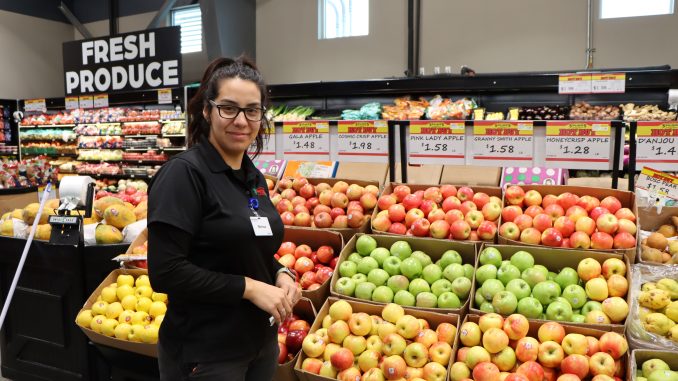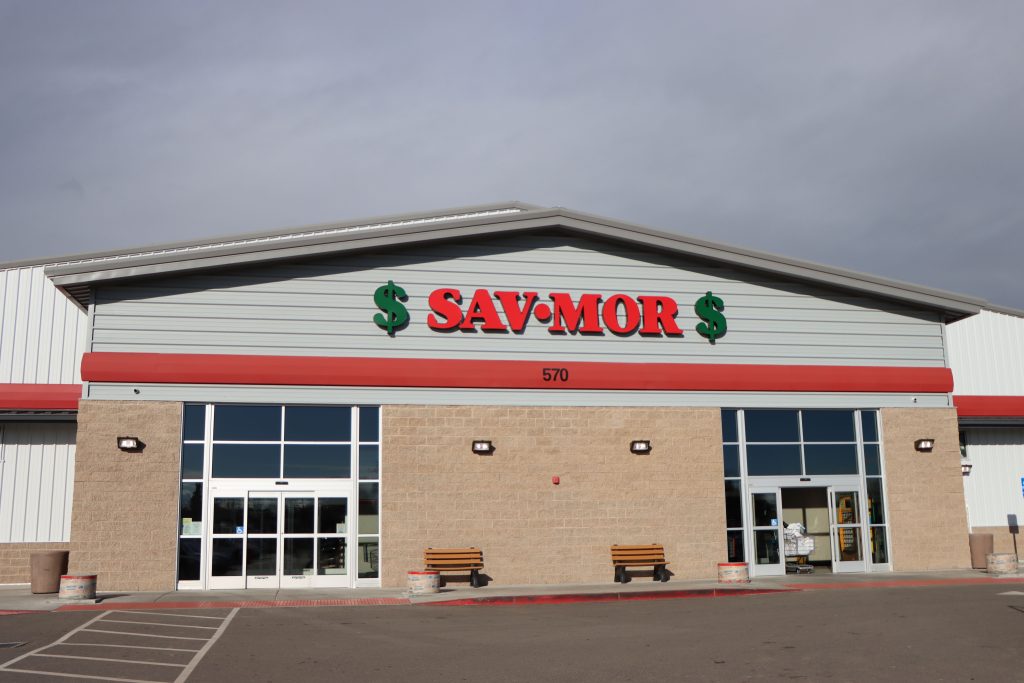
In Corning, Calif., population 8,209, representatives from several local charities stop by the Sav-Mor grocery store twice a week to collect food.
Free food, that is.
That is because each week the store donates edible food that it would otherwise throw away, which is in compliance with a new California law that aims to prevent food waste and hunger at the same time.
“It’s anything that is safely edible. They don’t want that going in the trash if it helps somebody to have a meal,” Store Leader Shawn Anderson says.
Normally, unpurchased food, including edible food, at grocery stores ends up in landfills. As food degrades, the resulting organic waste produces methane gas that contributes to global warming and climate change.
But the goal of the new law is to reduce organic waste by 75% and increase edible food recovery by 20% in California by 2025.
Since Jan. 1, 2022, the law has required grocery store buildings equal to or greater than 10,000 square feet, food service providers, food distributors and wholesale vendors to donate edible food that they would otherwise toss out.
Restaurants, hotels, health facilities, state and local education agencies and large venue events must begin collecting edible food to give away beginning January 2024.
In fact, even before the new law passed, Anderson says the Sav-Mor in Corning regularly donated produce to local farmers.
“We have always had pig farmers to pick up all of it, so none of that gets dumped. They just take it all,” he says.

The Sav-Mor in Corning is a 33,000 square-foot building with some 80 people working there, says Anderson, and the store maintains its own system for food collection.
As part of their daily process, every department goes through items and checks dates as they stock and rotate items on shelves. If they find edible items that are otherwise past the sale by date, they pull them from the shelves, set them aside and prepare them for donation, he says.
This includes items like baked goods and deli items, Anderson says.
“We try to pull things before they go out of date,” he says.
Items like dairy, deemed too risky to donate safely, go in the trash, he says.
Food items pulled for donation are then “scanned out,” of the system and sent to the store’s receiving area where representatives from local charities, including churches, a senior center and several nonprofits, arrive to pick up the items.
Under the law, food donors must set up agreements with food recovery organizations to haul off the donated food. But Anderson says finding those organizations is simple.
“There are plenty of people who want to get this. So, if you find the right people, they’ll get it and put it to good use,” he says.
Since the store has always donated food, one thing that is new for Sav-Mor is the way they document the food they give away in compliance with SB 1383. The law requires entities to keep records of the edible food they donate.
Anderson says that during the week of July 2-8, the grocery store gave away an estimated 140 pounds of food.
For the store, one benefit of complying with the law is that food collection prevents people from diving into the store’s dumpsters for food, which, Anderson says, is dangerous.
“I don’t think the customers really seem to benefit from it. I think it’s more just the community,” he says. “There’s a lot of people who need food. It is nice to know that we are helping people. So that’s a good thing.”

For more information on SB 1383 and how it will affect Tehama County residents, visit www.tehamacountylandfill.com. This article was funded by a grant from CalRecycle.

